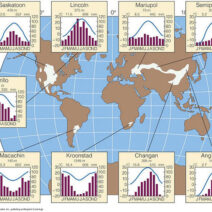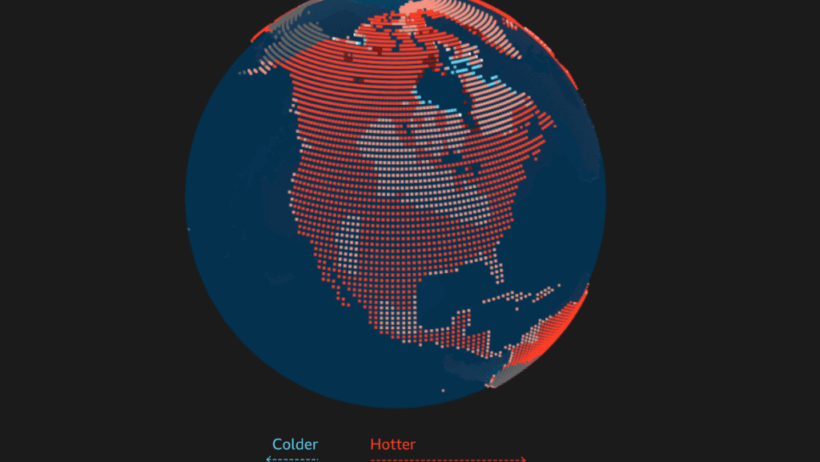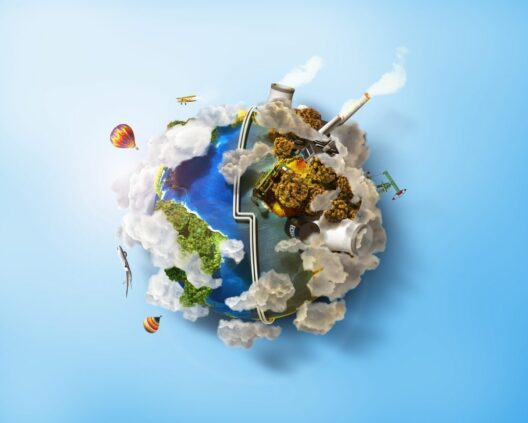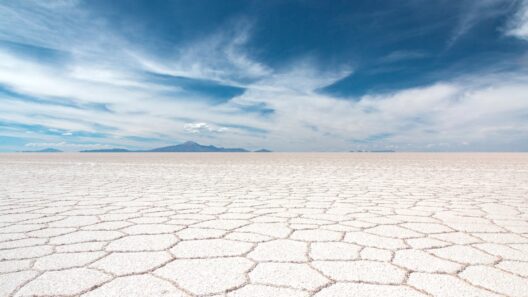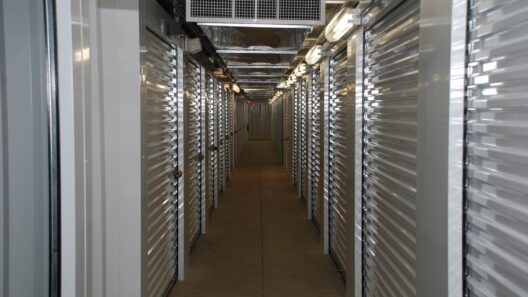The specter of climate change looms large over our collective future, prompting an essential inquiry: will climate change kill us? As the inexorable march of global warming continues, understanding worst-case scenarios becomes imperative. These scenarios, while daunting, can ignite urgency and provoke profound contemplation about our trajectory. Climate change, a veritable crisis induced by anthropogenic factors, beckons us to examine not only the physical changes to our environment but also the sociopolitical ramifications and the existential threats they pose.
The worst-case scenarios of climate change are often couched in the potential for significant temperature increases, exceeding 4°C by the end of this century if current trajectories are maintained. This elevation might seem abstract, yet it carries dire implications for ecosystems and human societies. As temperatures rise, the frequency and intensity of heatwaves, storms, and droughts will escalate. Prolonged heat can exacerbate health issues, lead to crop failures, and convert once-fertile regions into arid wastelands. The specter of famine, exacerbated by rampant food insecurity, becomes a bitter reality for millions.
Dive deeper into the intricate web of climate systems, and one must consider the catastrophic potential of sea-level rise. Estimates suggest that melting polar ice caps could displace millions, rendering coastal cities uninhabitable. The inundation of urban centers like New Orleans, Miami, and Jakarta is not a distant dystopia; it is a plausibility fostering the need for climate migration. Communities would be uprooted, cultures dismantled, and the psychological toll on displaced populations would be colossal. What happens when entire nations are forced to relocate? Such mass migrations could incite geopolitical tensions and societal instability, overwhelming resources in host nations.
Furthermore, the degradation of natural ecosystems—a direct fallout of climate change—offers a glimpse into the broader ecological consequences. Coral reefs, often dubbed the rainforests of the sea, face annihilation due to acidification and rising temperatures. These biodiverse habitats are not merely aesthetic wonders; they play a crucial role in sustaining marine life and protecting coastal communities. As reefs vanish, so too do the livelihoods of countless individuals dependent upon fisheries. The cascading effects intersect across species, economies, and communities, painting a picture of a world long disordered by human hands.
The social ramifications of climate change extend beyond environmental degradation. The potential for civil unrest, driven by resource scarcity, is palpable. Historical precedents serve as a warning—dwindling water supplies have incited uprisings and conflicts in various regions. Climate change operates as a “threat multiplier,” exacerbating existing societal rifts and inflating tensions. In worst-case scenarios, resource wars could emerge as nations compete fiercely for the dwindling remainder of vital assets. This could lead to a volatile world, wherein stability hinges on the availability of water, food, and energy.
Demographic shifts provide further illustration of the dire landscape. Under worst-case scenarios, urban areas will burgeon as people flock from rural regions besieged by climate impacts. Cities, already strained by population surges, face infrastructural challenges, overwhelmed healthcare systems, and inadequate housing. The social fabric may fray under the weight of increased poverty and inequality, creating an environment ripe for unrest and violence. As climate impacts worsen, the divide between those who can afford adaptation and those who cannot will widen exponentially. Will society allow inequality to exacerbate human suffering?
The unpredictability of climate feedback loops further complicates our understanding of potential outcomes. For instance, thawing permafrost releases copious amounts of methane—a far more potent greenhouse gas than carbon dioxide. This feedback loop could accelerate atmospheric warming at a pace that renders current adaptation strategies obsolete. The ramifications extend into the realm of biodiversity, as species, unable to adapt or migrate, face extinction. This loss of biodiversity threatens myriad ecosystems that sustain life on Earth. The interdependency of life forms, intricate and delicate, hangs in the balance.
Yet, amidst this bleak tableau, understanding worst-case scenarios can catalyze collective action. They serve not merely as harbingers of despair but as catalysts for transformative change. Engendering a sense of urgency can mobilize communities toward action, fostering innovation in renewable technologies, sustainability practices, and advocacy for climate justice. Instead of succumbing to fatalism, society holds the potential to reforge its relationship with the planet, redefine progress, and embrace sustainability as a guiding principle.
Education plays a pivotal role in shifting perspectives. The more individuals understand the ramifications of climate inaction, the more likely they are to advocate for substantive policy changes. Awareness initiatives, grounded in factual information and innovative storytelling, can provoke curiosity and solicit sustained engagement with climate issues. This communal consciousness may very well be the antidote to apathy—an empowerment that cultivates activism rather than resignation.
In contemplating the question, “Will climate change kill us?” the answer is not a straightforward yes or no. The implications of climate change—rooted in our actions—are profoundly intertwined with our choices moving forward. Each worst-case scenario is not an inescapable doom; rather, it’s a call to arms. A prompt to rethink our interactions with the planet and each other. The future is not set in stone, and humanity possesses the agency to forge a different reality—less fraught with peril, and more suffused with sustainability and hope.
As we stand at this crossroads, it is vital to recognize our interconnectedness as stewards of the Earth. The question envelops more than just survival—it challenges us to aspire to thrive in symbiosis with our environment. By fostering a culture of resilience, innovation, and compassion, society can indeed transcend the worst-case scenarios that climate change presents. This is a pivotal moment, one where every action taken today can influence tomorrow. So, let us choose wisely, for the stakes have never been higher.
